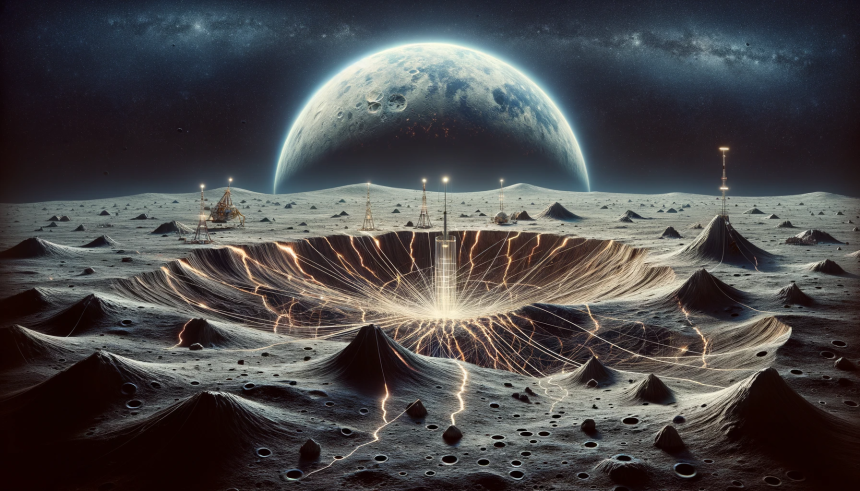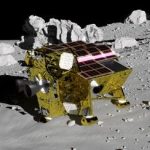The Moon, a loyal satellite of Earth, is currently experiencing a significant process of size reduction. Furthermore, this process of celestial slimming does not occur with elegance or finesse. Recent research has uncovered extraordinary landslides and seismic activity occurring on the lunar surface, which can be attributed directly to the shrinking of the moon.
Similar to the process of a grape dehydrating and transforming into a raisin, the Moon’s interior undergoes cooling over a period of time, resulting in a gradual contraction. The gradual reduction in size, calculated to be more than 150 feet in circumference over the course of several hundred million years, leads to the formation of creases and cracks on the surface. Currently, these wrinkles are assuming a perilous trajectory.
The Moon’s crust, in contrast to the resilient and forgiving skin of a grape, is fragile and unyielding. As the Moon undergoes shrinkage, internal forces generate compression between different regions of the crust, resulting in the formation of “thrust faults” which can be described as lunar cliffs. The Moon’s south pole area is especially susceptible to these faults, as the presence of water ice deposits further compromises the already strained rock.
What is the outcome? Massive landslides of cosmic proportions. Recent investigations of lunar data indicate the presence of newly formed debris flows in the fault zones, with some extending over several kilometers. Furthermore, it is not merely a matter of rearranging the stationary landscapes. This reshuffling of the lunar surface produces moonquakes, some reaching a frightening magnitude of 5 on the Richter scale.
These lunar disturbances are not only captivating astronomical phenomena, but they also have tangible consequences in the real world. The forthcoming Artemis III mission by NASA, which seeks to successfully land men on the south pole of the Moon, is confronted with fresh obstacles. Previously designated secure landing areas may now contain precarious precipices and active tectonic faults.
The diminishing size of the moon serves as a reminder of the ever-changing nature of celestial objects. It also shows the delicate balance between scientific exploration and guaranteeing the safety of future lunar astronauts. Gaining insight into the moonquakes and landslides that occur as a result of the Moon’s contraction is of utmost importance in order to effectively strategize for the next missions.
Scientists are currently doing meticulous research on the lunar surface, specifically focusing on identifying fault zones and closely monitoring seismic activity. This knowledge will be crucial in mapping secure pathways for astronauts and constructing lunar infrastructure that can endure the Moon’s continuous metamorphosis.
Therefore, when you observe the moon in the future, bear in mind that it is not solely a heavenly signal in the nocturnal firmament. The world is dynamic and constantly evolving, but this process occurs across vast periods of time. These changes have the potential to significantly alter our comprehension of both the universe and our own future. The Moon’s size may be decreasing, but the resourcefulness of Earth’s inhabitants could enable them to adapt to its changing terrain.








